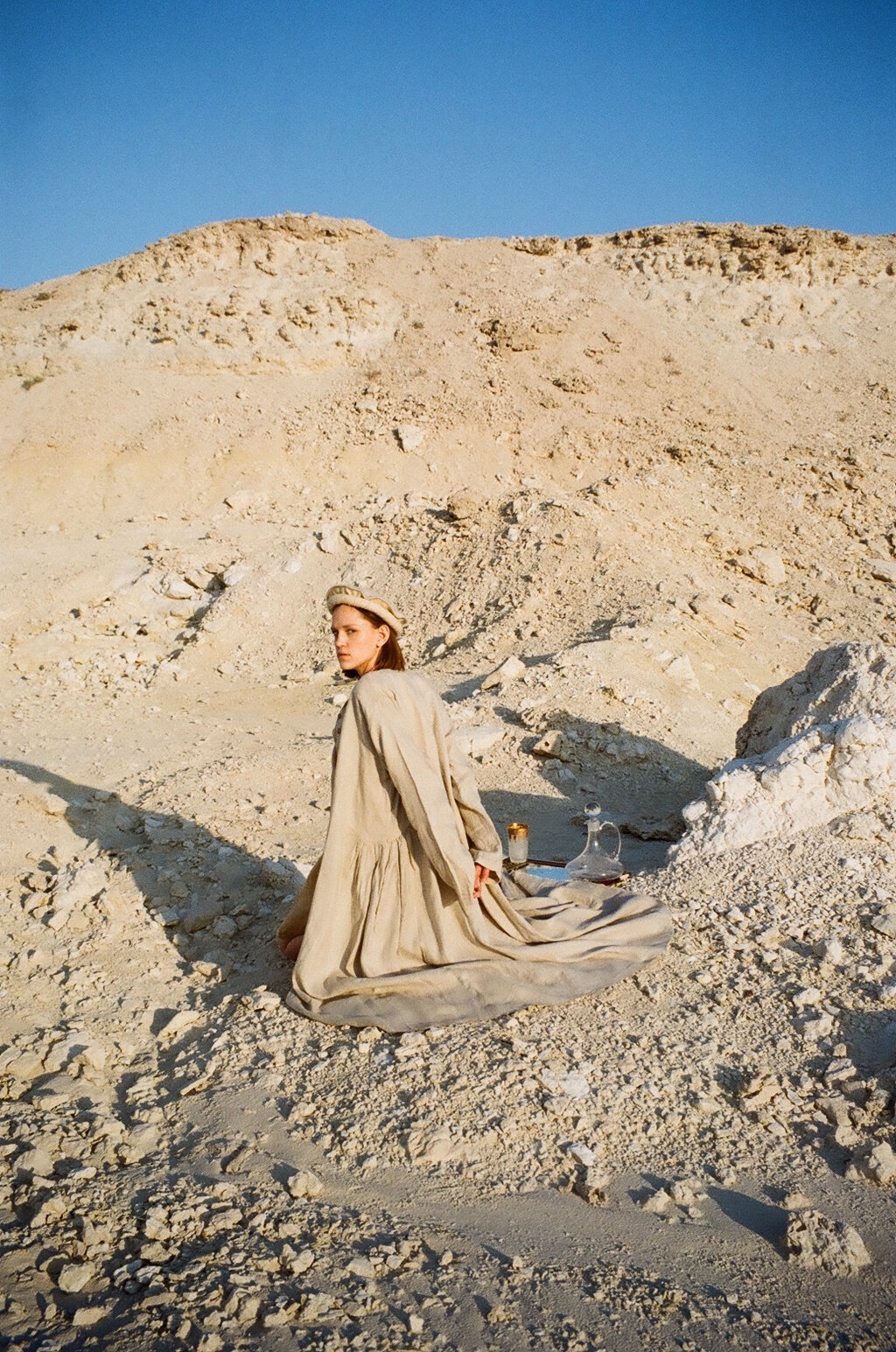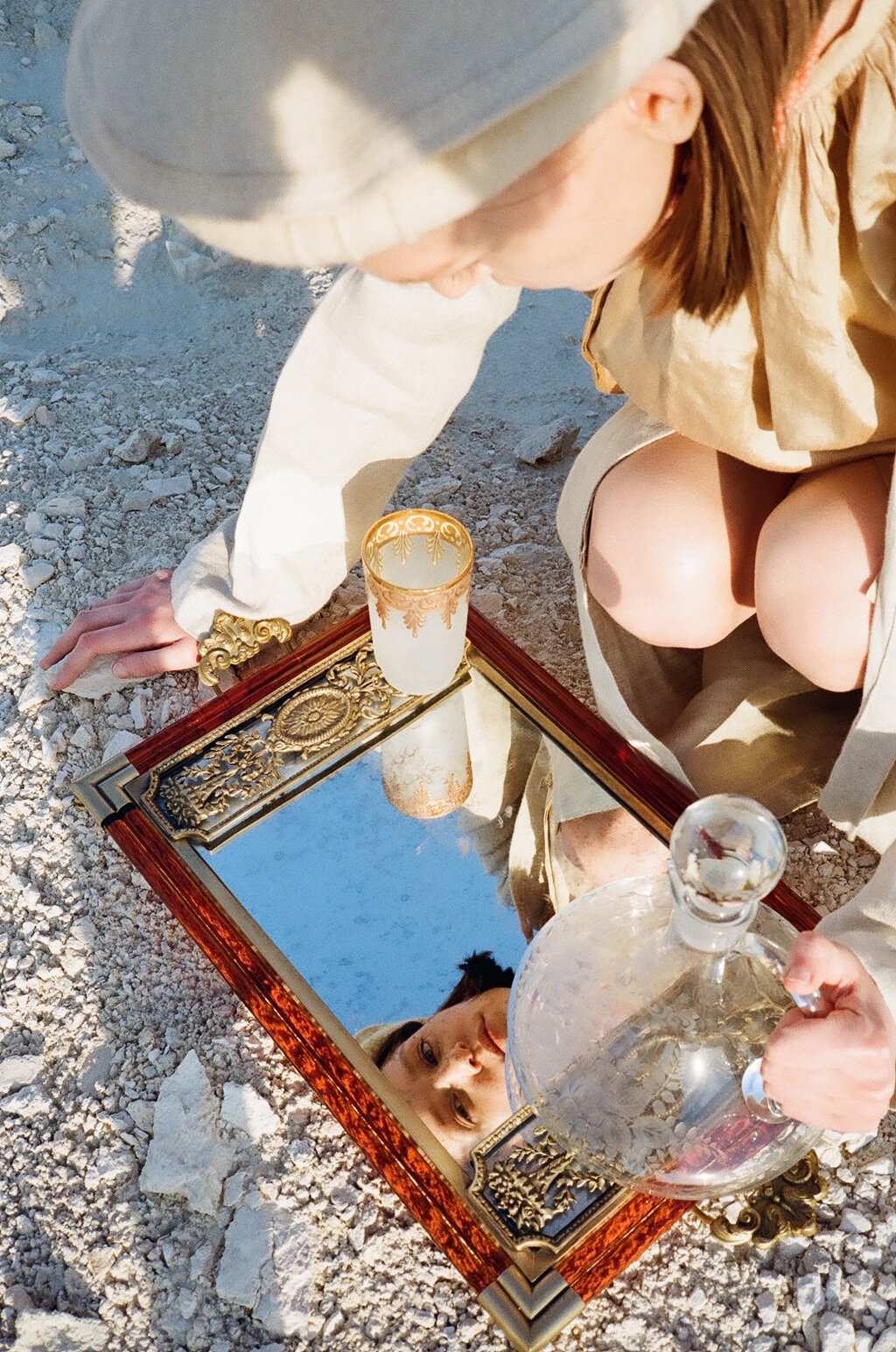Hala Kaiksow: Traditional Middle Eastern Weaving with a Modern Twist
“I sometimes feel we’ve forgotten that the human hand can imbue clothes with a sense of soul, or that craft is what’s missing from the fashion conversation these days.”
To this day, weaving is globally recognised as one of the primary surviving Art & Craft traditions. The custom of weaving dates back to the Neolithic times, approximately 12,000 years ago. Handmade textiles were a means of aesthetically defining the culture, geography and social structure of a particular era. Countries in the Northern regions of Africa, Central Asia, Northern India and the Middle East have a long history with weaving and are individually distinguished for their beautiful handmade textiles, featuring varied patterns, colours, textures and densities for different purposes.
As a result of the Industrial Revolution, the use of mass production has dramatically risen and dominates the fashion industry in present day society. Unfortunately, this has caused many traditional handmade textile practices to become extinct. Attempting to combat the damage that the current market causes to both the workers involved and the environment, consumers, activists and employees within this market are compelling fashion brands and manufacturers to increase their production transparency.
With constant research leading to innovation, brands and designers are creating alternatives to standard materials and processes, for example decreasing waste and developing new fibres, textiles and ecological production methods. The urgency in our need for a circular economy is dramatically increasing as our environment visibly deteriorates around us. However, while innovation is essential, this is not the only pillar to be followed when promoting sustainable design. There is also value in encouraging Slow Fashion and the revival of traditional craft techniques, such as weaving.
“Slow fashion is about the relationship humans have with clothes, such as how we cling to certain things in our wardrobe because they are carefully made from fine materials, rather than seeing them as quick trends or disposable items.”
As opposed to Fast Fashion, which results in unsold stock being deposited into the landfill daily, small collections produced by handicraft do not generate waste or residues. In addition to this, designers can consciously choose their raw materials and labour locally when manufacturing on a small scale. Another key aspect is that with Slow Fashion and handmade pieces, consumers gain an increased understanding of the value of the artisan’s work, which hopefully adapts their relationship with the garment itself. Unlike when purchasing impulsively, one can hope that the consumer will make a conscious decision to obtain an item and therefore render it as less disposable, reflective of the garment’s high quality and worth. In this way, craft has an essential role in establishing a more sustainable fashion movement. To support this movement, we must foremostly respect the work of the artisan, offering them the appropriate conditions and rights so that they can exercise their occupation without aversion.
Hala Kaiksow
Eco-conscious Hala Kaiksow is a 21st-century artisan. Born and raised in Bahrain, the young designer graduated with a Masters in Collection Design from Polimoda in Florence, Italy. She had previously obtained a Bachelor of Fine Arts from SMFA at Tufts University in Massachusetts, USA with a specialization in Metal and Glass sculpture. Designer, artist and sculptor, Hala Kaiksow uses her technical knowledge to experiment and explore the infinite possibilities of building garments. By considering clothing as a sculpture developing around the female body, she can creatively expand the common understanding of a garment.
Hala’s varied sources of inspiration range from the ancient nomadic clothing of the Berbers to the costumes of the Tuareg tribes and the traditional Barhani uniforms that reflect the richness of Islamic tradition. In her work, it is possible to identify the juxtaposition between the Eastern and Western worlds.
“I’ve always been drawn to raw textures and materials that recall Bahrain’s landscape, whether it’s rock formations in the desert, the colour of a traditional gypsum wall or the bark of an ancient tree.”
Traditional craftsmanship and handiwork are the most important aspects of her enterprise. She uses her expertise to hand-weave exquisite fabrics, craft buttons and practice natural dyeing, for which she uses a variety of ingredients including saffron, clay, coffee, redwood and indigo dye produced from a Middle Eastern Indian flowering plant. Adapting ancestral craft traditions, she continues to evolve techniques and recontextualise design with a modern and sophisticated perspective.
In 2016, as part of the imminent global Slow Fashion movement, Hala founded her brand of sustainable women's clothing. From her handloom, she patiently weaves materials such as raw linen, silk and hemp into elaborate patterns and textures before adding details such as metal and wood. Each piece is meticulously constructed and can take up to a long time to finish. It is Hala’s intention that her clothing should, if properly taken care of and mended when necessary, last the lifetime of the owner.
Her choice of local and controlled production keeps Bahrain's ancient artisan tradition alive while actively supporting the economy of her country. The designer chooses her suppliers through fair trade and regularly experiments with recycling techniques without compromising the high-quality standards of her designs.
For the Spring 2018 collection, Hala joined forces with the non-profit organization Nomablue to create a dialogue between designers and NGOs focused on nature conservation. Her handmade garments were on display in the Victoria & Albert Museum and were included in several collective exhibitions around the globe. She was awarded with the prestigious Jameel 5 Prize, an international award for contemporary artists and designers inspired by the Islamic tradition of the Art Jameel Foundation. Hala Kaiksow manifests her ability to rework iconic designs into modern, wearable garments and demonstrates how ancient Islamic crafts remain relevant in today’s fashion community.
You can learn more about Hala Kaiksow’s work and processes through the video and links below.
INFO
Words
Nina Zulian
Editor
Gyamfia Osei
Hala Kaiksow
http://www.halakaiksow.com/home
https://www.instagram.com/halakaiksow/
PHOTOGRAPHY
Miriam Marlene
STYLING
Cecilia Musmeci
VIDEOS
The Travelling Loom by Sergio Miranda
Studio Aca
Jameel Prize 5 by The Victoria & Albert Museum







